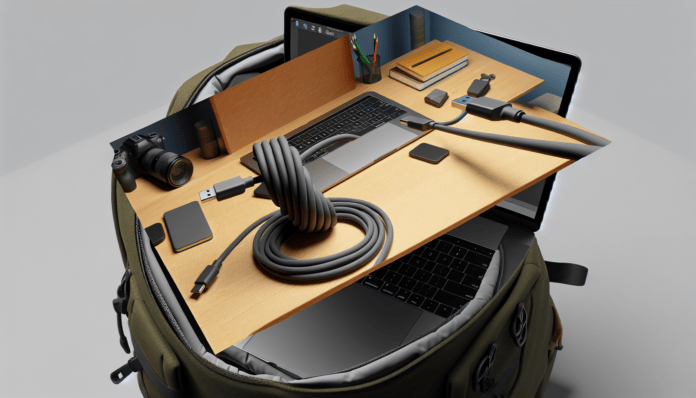If you’re constantly battling a tangle of charging cables in your backpack, a simple 3D-printed solution might be the answer. A Reddit user recently shared a clever design for a cable winder that’s both compact and highly functional—perfect for anyone looking to tidy up their tech accessories.
3D Printing for Everyday Cable Management
The cable winder, designed by Reddit user u/robertrls, is a small, 3D-printed accessory that helps keep USB-C and other charging cables neatly coiled. The design is optimized for portability and ease of use, making it ideal for students, commuters, and digital nomads who carry multiple devices and accessories.
What sets this winder apart is its simplicity. It consists of a central spool with two side arms that hold the cable in place. The user wraps the cable around the spool, and the ends are secured in notches to prevent unraveling. The design is minimal, but it effectively eliminates the mess of loose cables in a backpack or laptop bag.
How to Print and Use the Cable Winder
The cable winder is available as a free STL file on Printables, a popular platform for sharing 3D models. It’s designed to be printed without supports, making it accessible even for beginners with entry-level 3D printers. The print time is relatively short, and the model uses a minimal amount of filament.
Once printed, the winder can accommodate cables of various lengths and thicknesses. It’s especially useful for USB-C cables, which are commonly used for charging smartphones, tablets, and laptops. The compact size means it fits easily into a pocket or tech pouch, and it can be printed in different colors to match your gear or personal style.
Why 3D Printing Is Ideal for Custom Accessories
This cable winder is a great example of how 3D printing empowers users to create personalized, functional tools that solve everyday problems. Unlike mass-produced accessories, 3D-printed items can be tailored to specific needs—whether that’s a particular cable length, a unique color scheme, or a custom logo.
Moreover, 3D printing allows for rapid prototyping and iteration. Designers can quickly test and refine their models, and users can modify the STL files to better suit their preferences. This open-source approach fosters a community of makers who share and improve upon each other’s ideas.
Expanding the Use of 3D-Printed Cable Organizers
While this particular winder is designed for USB-C cables, the concept can be expanded to other types of cords—such as HDMI, Ethernet, or even headphone cables. With a bit of customization, users can create a full set of cable organizers tailored to their specific tech setup.
In professional environments, such as offices or production studios, 3D-printed cable management tools can help maintain a clean and efficient workspace. They’re also useful in travel scenarios, where space is limited and organization is key.
As 3D printing becomes more accessible, we can expect to see a growing number of practical, user-designed accessories like this one. Whether you’re a seasoned maker or just getting started, printing your own cable winder is a simple project with a big payoff in everyday convenience.
Source: xda-developers.com

